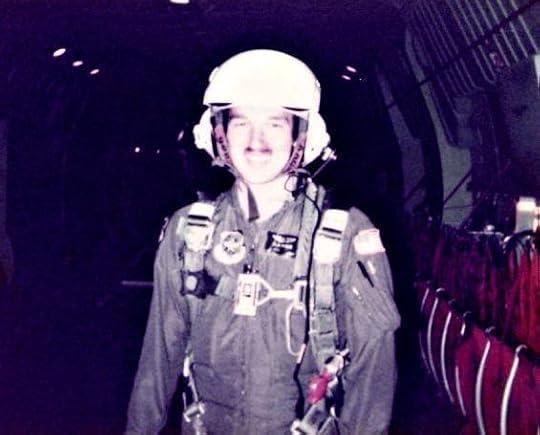From 1963 through 1967, the Lockheed Corporation (known since 1995 as Lockheed Martin) delivered 285 "Tubes of Pain," officially known as C-141 Starlifters, to the United States Air Force. The giant cargo planes represented a new, jet-propelled, long-range alternative to the propeller-driven cargo planes of the past. The high-speed, high-flying planes were capable of carrying up to 45 tons of cargo or 200 troops. Together, they transported millions of tons of military personnel and equipment, including a serious amount of MAC artifacts (aircrew souvenirs), to points around the world until they were taken out of service in 2006 (
The Aviation Zone).

The most well-known of these massive air machines was the "Hanoi Taxi," made famous in 1973 as the first aircraft to return American prisoners of war to the United States from Vietnam (
National Museum of the United States Air Force). The Taxi was again called upon for evacuation services after Hurricane Katrina struck the American Gulf Coast in 2005 (
Air Force Reserve Command). This storied aircraft can still be seen today at the National Museum of the United States Air Force near Dayton, Ohio, where it is on permanent display.

I served as a loadmaster aboard Starlifters from 1980 to 1984, which put me in charge of loading and offloading cargo and of any in-flight passengers. Being "in charge" was a little awkward at first when I was fresh out of tech school at age 19. But, the more experienced loading crews, sometimes 20 year veterans, understood the situation and were usually very respectful about it. I was assigned to the 20th Military Airlift Squadron at Charleston Air Force Base, South Carolina. From there we flew to locations throughout the Americas, as well as Europe, Africa and Asia. It was peacetime and our missions were generally routine with an occasional flash of excitement, such as the
International Incident and the
International Incident, Part 2. Our squadron was also involved in missions supporting Operation Urgent Fury; the eviction of the Cubans after their ill-advised October 1983 invasion of Grenada.

Fort Wayne, Indiana, 1997
Photo by Tami RubleAfter four years of flying with the well-trained, yet sometimes inexperienced, Air Force pilots, I knew I'd cheated death long enough (see
In-Flight Emergency!). On April 11, 1984, I said goodbye to the Starlifter never to fly on her again. I was, however, fortunate enough to board a 141 one last time in 1997 as it was parked in static display at an airshow in Fort Wayne, Indiana. I enjoyed the opportunity to reminisce while, at the same time, showing my wife and sons the great airplane I once called home. It won't likely happen again, though, as the Air Force, since 2006, has been dismantling the once great airships in the Arizona desert. A sad end to the truly great work-horse of the sky; the Lockheed C-141 Starlifter.

Davis-Monthan Air Force Base, Arizona
 newest »
newest »
 newest »
newest »
 I refueled many of the C-141s during my 29 year boom operator career. I remember when they 'stretched' the -141 by 23 feet and added the a/r receptacle back in the early '80s.
I refueled many of the C-141s during my 29 year boom operator career. I remember when they 'stretched' the -141 by 23 feet and added the a/r receptacle back in the early '80s.
 I am also a former C-141 Loadmaster from Indiana! I was in 4 MAS out of of McChord AFB in Tacoma from '79-'82. i actually flew THROUGH the eruption of Mt St Helens! Great to read! Thanks for posting!!
I am also a former C-141 Loadmaster from Indiana! I was in 4 MAS out of of McChord AFB in Tacoma from '79-'82. i actually flew THROUGH the eruption of Mt St Helens! Great to read! Thanks for posting!! Glenn, I remember seeing the refueling operation from the other end. It often seemed that the boom was going to come through the window!
Glenn, I remember seeing the refueling operation from the other end. It often seemed that the boom was going to come through the window! 


 Fort Wayne, Indiana, 1997
Fort Wayne, Indiana, 1997  Davis-Monthan Air Force Base, Arizona
Davis-Monthan Air Force Base, Arizona



